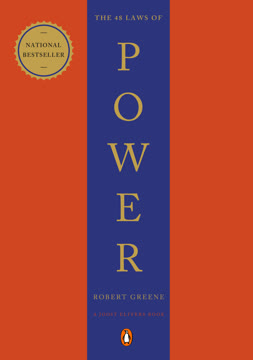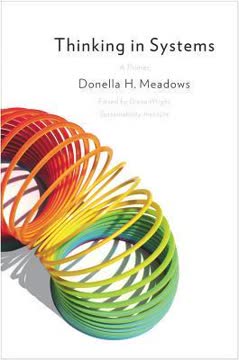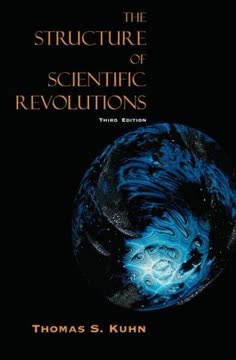Key Takeaways
1. Critical thinking is manual, purposeful thinking using a structured framework
Critical thinking is manual rather than automatic thinking.
Manual vs. automatic thinking. Critical thinking requires consciously shifting from our default automatic mode to a more deliberate, manual mode of thinking. This involves:
- Awareness of our thought processes
- Questioning assumptions and biases
- Applying specific tools and techniques
The critical thinking framework consists of three main components:
- Clarity: Defining and understanding the problem
- Conclusions: Generating potential solutions
- Decisions: Choosing and implementing a course of action
By following this structured approach, we can improve our problem-solving and decision-making skills across various personal and professional contexts.
2. Clarity is crucial: Define the problem before attempting to solve it
The single most important reason why headscratchers—projects, initiatives, problem solving, decisions, or strategies—go awry is that the headscratcher itself—the situation, issue, or goal—isn't clear in the first place.
Tools for achieving clarity. To gain clarity on a problem or goal, use these critical thinking tools:
- Inspection: Examine and define key terms
- Why?: Probe deeper to uncover root causes
- So What?: Identify relevance and implications
- Need: Determine the necessity of solving the problem
- Anticipatory Thinking: Consider potential consequences
- What Else?: Explore alternative explanations or solutions
- Ingredient Diagram: Map out variables affecting the issue
- Vision: Describe the desired end state
By investing time in clarity at the outset, you can avoid wasted effort and resources later in the problem-solving process. Clear problem definition allows for more focused and effective solutions.
3. The premise forms the foundation for all conclusions
It's all about the premise!
Components of a premise. A premise consists of five key elements:
- Facts: Absolute truths
- Observations: Information from external sources
- Experiences: Personal firsthand knowledge
- Beliefs: Core values and biases
- Assumptions: Educated guesses based on the above
These components work together to form the basis for our conclusions. By examining and strengthening each element of our premise, we can improve the quality and reliability of our thinking and decision-making.
4. Facts, observations, and experiences shape our assumptions and beliefs
Assumptions are formed from facts, observations, and experiences.
Building strong assumptions. To develop reliable assumptions:
- Distinguish facts from observations and experiences
- Evaluate the credibility of information sources
- Seek diverse perspectives and experiences
- Recognize and challenge personal biases
Be aware that strong inductive reasoning based on extensive experience can sometimes lead to "old dog thinking," limiting our ability to consider new possibilities. To combat this:
- Team up with less experienced individuals for fresh perspectives
- Actively seek out new information and experiences
- Challenge long-held assumptions and beliefs
By consciously examining the foundations of our assumptions, we can improve the overall quality of our thinking and decision-making processes.
5. Strong premises lead to confident conclusions and decisions
The stronger the premise, the more reliable the conclusion—and the more confidence you'll have in it.
Strengthening premises. To build stronger premises:
- Verify facts and assess the credibility of observations
- Seek consistent information from multiple sources
- Gain relevant experiences or consult with experts
- Examine and challenge personal beliefs and biases
- Validate assumptions through testing or additional research
Tools for evaluating premise strength:
- Credibility: Assess the reliability of information sources
- Consistency: Look for alignment among premise components
- Triangular Thinking: Approach the problem from multiple angles
By focusing on building strong premises, we can increase our confidence in conclusions and make more effective decisions.
6. Innovation requires pushing beyond traditional thinking boundaries
To think outside the box, you have to acknowledge that the box is bound by your premise.
Techniques for innovative thinking:
-
Outside-the-Box Thinking:
- Challenge assumptions and boundaries
- Ask "What if?" and "What other?" questions
-
Abductive Thinking:
- Make educated guesses based on knowledge without direct experience
- Combine expertise with fresh perspectives
-
Impossible Thinking:
- Imagine solving an impossible version of the problem
- Use outlandish scenarios to generate novel ideas
These techniques help break free from conventional thought patterns and generate creative solutions. By deliberately pushing beyond our usual mental boundaries, we can discover innovative approaches to complex problems.
7. Effective decision-making relies on clear criteria and risk assessment
Decisions require a checklist, a list of criteria with which to decide.
Key components of decision-making:
- Who: Identify the decision-maker
- Need: Understand the necessity for the decision
- When: Establish a timeline for the decision
- Criteria: Define specific conditions for approval
- Risk: Assess potential upsides and downsides
Risk assessment factors:
- Downside: Potential negative outcomes
- Probability: Likelihood of negative outcomes
- Reversibility: Ability to undo the decision
- Alternatives: Other available options
- Experience: Prior knowledge in similar situations
- Preparation: Readiness to handle consequences
- Time: Urgency of the decision
By systematically evaluating these factors, decision-makers can make more informed choices and better manage potential risks. Clear criteria and thorough risk assessment lead to more confident and effective decisions.
Last updated:
FAQ
What's "Think Smarter: Critical Thinking to Improve Problem-Solving and Decision-Making Skills" about?
- Purpose of the Book: "Think Smarter" by Michael Kallet is designed to enhance problem-solving and decision-making skills through critical thinking. It provides a framework and tools to think more effectively.
- Framework Introduction: The book introduces a three-step critical thinking process: Clarity, Conclusions, and Decisions, which guides readers in addressing complex problems.
- Real-World Application: It focuses on practical, real-world tools and techniques rather than theoretical concepts, making it applicable for business professionals.
- Goal of the Book: The ultimate aim is to help individuals and organizations improve their overall performance by applying critical thinking to everyday challenges.
Why should I read "Think Smarter"?
- Improve Problem-Solving: The book offers tools to enhance your ability to solve problems effectively, which is crucial in both personal and professional settings.
- Decision-Making Skills: It provides strategies to make better decisions by understanding and evaluating different perspectives and assumptions.
- Practical Tools: Unlike theoretical texts, "Think Smarter" offers pragmatic tools and exercises that can be immediately applied to real-world situations.
- Broaden Perspectives: It encourages thinking outside the box and challenges existing assumptions, leading to more innovative solutions.
What are the key takeaways of "Think Smarter"?
- Critical Thinking Framework: The book emphasizes a structured approach to critical thinking, involving clarity, conclusions, and decisions.
- Importance of Clarity: Getting clear on the problem is crucial to avoid solving the wrong issue, which is a common pitfall in problem-solving.
- Role of Assumptions: Understanding and questioning assumptions is vital for reaching sound conclusions and making informed decisions.
- Innovation Techniques: The book introduces methods like outside-the-box thinking and abductive thinking to foster creativity and innovation.
How does Michael Kallet define critical thinking in "Think Smarter"?
- Manual Thinking: Critical thinking is described as manual, purposeful thinking, distinct from automatic thinking, which often involves biases and assumptions.
- Process-Oriented: It is a structured process that involves understanding a situation, reaching a conclusion, and taking action.
- Tool Set: Critical thinking uses a specific set of tools and techniques to guide effective thinking and problem-solving.
- Awareness of Biases: It involves being aware of the partiality of one's thinking and striving to minimize biases in decision-making.
What is the "Clarity" step in the critical thinking framework of "Think Smarter"?
- Understanding the Problem: Clarity involves getting a clear understanding of the issue, problem, or goal to ensure you're addressing the right problem.
- Tools for Clarity: The book provides tools like inspection, asking "why," and "so what" to help achieve clarity.
- Avoiding Missteps: Spending time on clarity helps avoid solving the wrong problem, which can lead to wasted resources and effort.
- Foundation for Solutions: Clarity is the foundation for developing effective solutions and making informed decisions.
How does "Think Smarter" suggest handling assumptions?
- Question Assumptions: The book advises questioning assumptions to ensure they are valid and not based on outdated or incorrect information.
- Foundation of Conclusions: Assumptions form the basis of conclusions, so it's crucial to understand and validate them.
- Critical Thinking Mode: In critical thinking, assumptions are not taken for granted; they are examined and tested for validity.
- Impact on Decisions: Validating assumptions strengthens the premise, leading to more reliable and confident decision-making.
What role do beliefs play in the critical thinking process according to "Think Smarter"?
- Core Values: Beliefs are described as core values that influence every conclusion and decision we make.
- Filter for Conclusions: They act as a filter through which we interpret facts, observations, and experiences.
- Acknowledge Differences: The book emphasizes acknowledging different beliefs when working with others to reach a consensus.
- Influence on Outcomes: Understanding how beliefs influence decisions can lead to more thoughtful and effective problem-solving.
How does "Think Smarter" address the concept of risk in decision-making?
- Risk Factors: The book introduces an 11-factor model to evaluate risk, including downside, probability, and controllability.
- Criteria for Decisions: Risk is a key criterion in decision-making, influencing whether to proceed with a particular action.
- Understanding Risk: By analyzing risk factors, individuals can better understand potential downsides and make informed decisions.
- Mitigation Strategies: The book suggests developing mitigation strategies to minimize the impact of potential risks.
What are some of the best quotes from "Think Smarter" and what do they mean?
- "There’s always a way." This quote emphasizes persistence and the belief that solutions exist for every problem, encouraging a proactive approach.
- "Knowledge is power." Highlighting the importance of knowledge in making informed decisions, this quote underscores the value of continuous learning.
- "Critical thinking isn’t about making people smarter; it’s about using a set of tools and techniques to think in a more effective way." This quote clarifies that critical thinking enhances the application of intelligence rather than increasing IQ.
- "The single biggest reason why projects, initiatives, and goals fail is the headscratcher wasn’t clear in the first place." It stresses the importance of clarity in problem-solving to avoid missteps and inefficiencies.
How does "Think Smarter" suggest fostering innovation?
- Outside-the-Box Thinking: The book encourages challenging existing assumptions and exploring new possibilities to foster innovation.
- Abductive Thinking: It introduces abductive thinking as a method of making educated guesses based on knowledge rather than experience.
- Impossible Thinking: By considering seemingly impossible solutions, the book suggests that new, innovative ideas can emerge.
- Creative Problem-Solving: These techniques aim to generate creative solutions that go beyond traditional problem-solving methods.
What is the role of a Thinking Coach in "Think Smarter"?
- Facilitator of Clarity: A Thinking Coach helps others achieve clarity by asking questions and guiding them through the critical thinking process.
- Non-Judgmental Role: The coach refrains from giving advice or opinions, focusing solely on helping others think critically.
- Encourages Independent Thinking: By not providing solutions, the coach encourages individuals to develop their own problem-solving skills.
- Valuable in Leadership: The role is particularly useful for leaders and managers who want to foster a culture of critical thinking within their teams.
What are the practical applications of "Think Smarter" in a business context?
- Improved Decision-Making: The book's tools and techniques can be applied to make more informed and effective business decisions.
- Enhanced Problem-Solving: By achieving clarity and questioning assumptions, businesses can solve problems more efficiently.
- Innovation and Creativity: The methods for thinking outside the box and fostering innovation can lead to new products and services.
- Team Alignment: Understanding and acknowledging different beliefs and assumptions can improve team collaboration and alignment.
Review Summary
Think Smarter receives mixed reviews, with an average rating of 3.78 out of 5. Many readers find it helpful for improving critical thinking skills, praising its practical examples and tools. The book's structure and clarity section are particularly well-received. Some criticize it for being overly simplistic or obvious, especially for those already familiar with critical thinking concepts. Positive reviews highlight its usefulness in business and problem-solving contexts, while negative reviews argue it lacks depth or offers little new information. Overall, opinions vary widely based on readers' prior experience with critical thinking.
Similar Books









Download PDF
Download EPUB
.epub digital book format is ideal for reading ebooks on phones, tablets, and e-readers.




